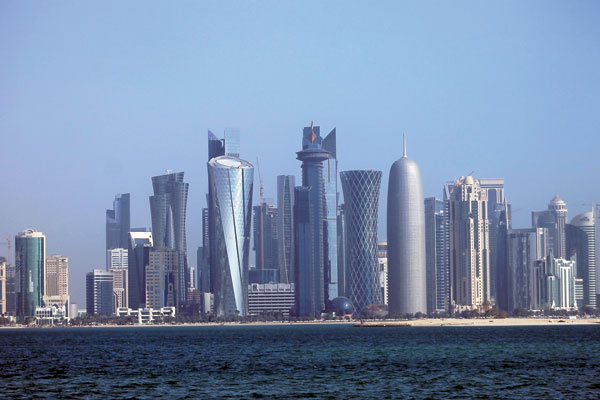

DOHA: Standard & Poor’s Ratings Services yesterday affirmed its ‘AA’ long-term and ‘A-1+’ short-term foreign and local currency sovereign credit ratings on Qatar. The outlook is stable. It also affirmed the ‘AA’ long-term issue ratings on the bonds issued by Qatari Diar Finance QSC and SoQ Sukuk A QSC.
“We expect the country’s fiscal and external positions to shift to deficits from 2016 onward. Nonetheless, Qatar has built a large net asset position over many years that will help it weather the current lower hydrocarbon price environment. We are therefore affirming our ‘AA/A-1+’ sovereign credit ratings on Qatar,” the global ratings services said.
“The stable outlook reflects our view that Qatar’s economy will remain resilient, supported by solid macroeconomic fundamentals, although we anticipate continued institutional weaknesses and only a moderate increase in hydrocarbon prices over the next two years… Our affirmation of our ratings on Qatar reflects our view that Qatar’s large net asset position will help it weather the lower hydrocarbon price environment,” S&P noted.
“Qatar is a wealthy economy. The country holds the third-largest proven natural gas reserves in the world, and is the largest exporter of liquefied natural gas (LNG). We expect Qatar’s reserves to provide many decades of production at the current levels.”
Qatar’s economy has grown by about 5.5 percent annually over the last four years, but we expect this to slow to about 4.0 percent during 2016-2019. The hydrocarbon sector will likely continue to stagnate. The moratorium on new projects in Qatar’s North Field will continue and will only be reviewed once gas prices begin to recover in the medium term, in our view. Non-oil growth, on the other hand, should remain buoyant, thanks to spending under a $125bn infrastructure investment program and supported by the growing population.
The S&P report noted Qatar has one of the lowest costs of production — $1.60 to $2.00 per million British Thermal Units — and is a profitable producer of LNG. Its strategy has been to diversify into all major markets, adjusting the mix of destinations and contract types according to market needs. Moreover, the majority of its gas exports are under long-term contracts, which provides some certainty regarding the volumes sold. We expect that Qatar will maintain its cost advantage over many new projects in other countries. In January 2016, the renegotiation of Qatar and RasGas’ (Qatar’s second-biggest LNG producer) contract with Petronet LNG (India’s biggest gas importer) at a discount of almost 50 percent indicates an increasingly much more competitive environment for natural gas and LNG sellers over the medium term. Existing LNG buyers committed to long-term contracts and other potential buyers may try to renegotiate or achieve similar commercial terms amid an environment of persistently low prices.
“We think upcoming budgets could include further measures to contain current expenditures in light of low hydrocarbon prices. The Qatari government has just implemented new measures that will help the fiscal situation over time, such as cuts in gasoline, water wastage, and utility subsidies,” the global ratings services said.
The Peninsula